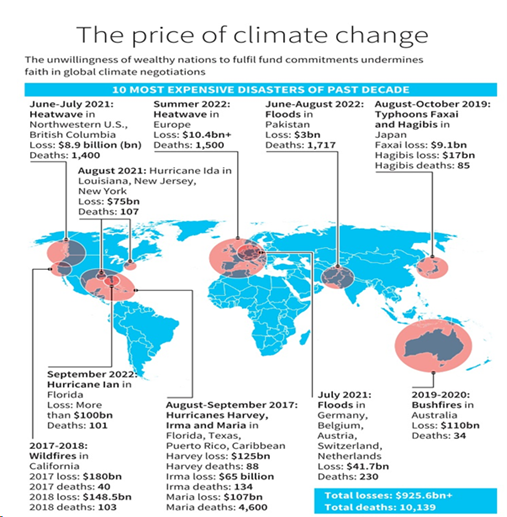PREVIOUS
COP 28 Summit - Part 1
(இதன் தமிழ் வடிவத்திற்கு இங்கே சொடுக்கவும்)
COP 28 Summit
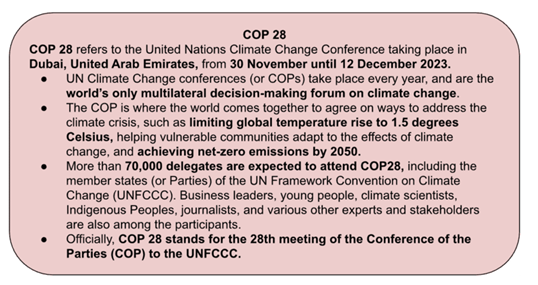
- The UN Climate Change Conference (COP 28) was hosted by the United Arab Emirates (UAE) from November 30 to December 12, 2023.
- It took place in Dubai, UAE, with representatives from 197 countries.
- They were presenting their initiatives to curb global warming and engaging in discussions on future climate actions.
- Attended by over 70,000 delegates, the conference aims to accelerate the shift to renewable energy and reduce emissions.
- Formally, COP 28 represents the 28th session of the Conference of the Parties (COP) to the UN Framework Convention on Climate Change (UNFCCC).
- It is occurring annually.
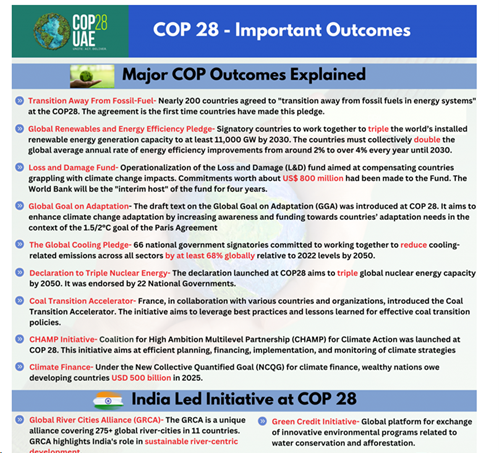
- It serves as the singular global forum for making decisions on climate change.
- It is boasting near-universal participation from countries worldwide.
- The host country appoints a president, in this case, Dr Sultan al-Jaber.
- He led the talks and play a crucial role in brokering agreements.
- Controversy surrounds Dr Sultan al-Jaber’s role due to his position in the fossil fuel industry, raising concerns about impartiality.
- COP 28 is more important due to increased geopolitical tensions following the Israel-Hamas conflict and Russia’s ongoing military operation in Ukraine.
- COP decisions are made by consensus, making the agreement process meticulous and emotionally charged.
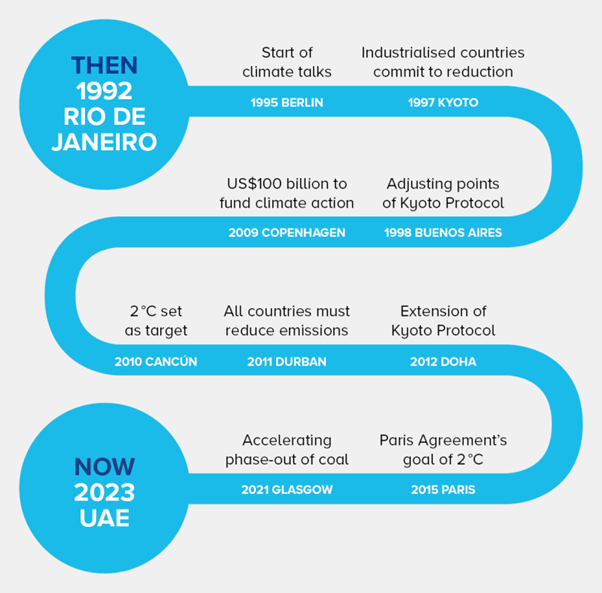
What is a COP?
- The UN’s annual climate change conference is known as the ‘Conference of the Parties’ or ‘COP’.
- The COPs are the main decision-making body of the UNFCCC.
- They adopt decisions and resolutions on various aspects of climate action, such as mitigation, adaptation, finance, technology, and transparency.
- COPs are gatherings held within the framework of the United Nations Framework Convention on Climate Change (UNFCCC).
- It is a multinational treaty established in 1992.
- Gathers of the conference is world leaders, ministers, and negotiators.
- Attendees include governments that have signed the UN Framework Convention on Climate Change, the Kyoto Protocol, and/or the Paris Agreement, as well as representatives from civil society, the private sector, international organizations, and the media.
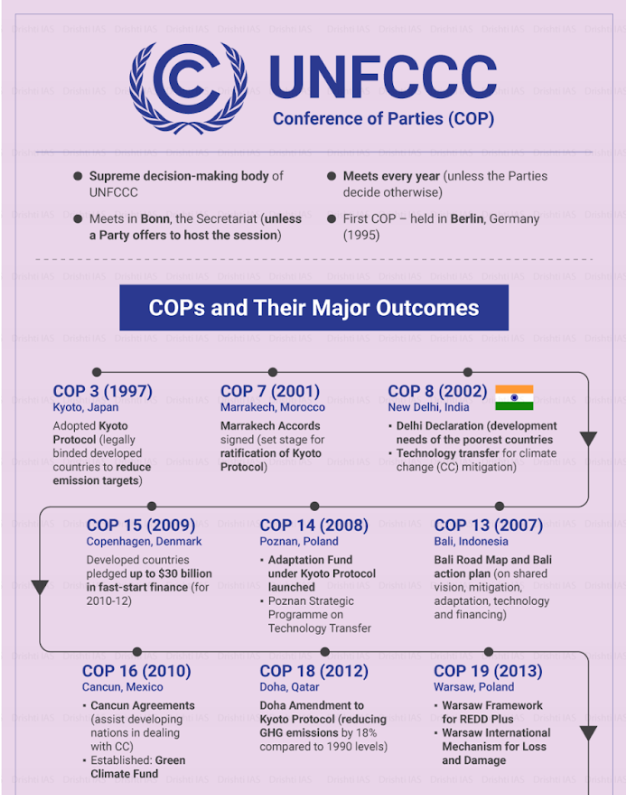
Goals of the Paris Agreement
- Keep global average temperature rise below 2°C, with efforts to limit it to 1.5°C above pre-industrial levels.
- Adapt to climate change and build resilience.
- Align finance flows with a pathway towards low greenhouse gas emissions and climate-resilient development.
- Temperature records keep getting broken, and experiencing severe wildfires, floods, storms, and droughts.
- The UN report says not doing enough to meet the goals of the Paris Agreement.
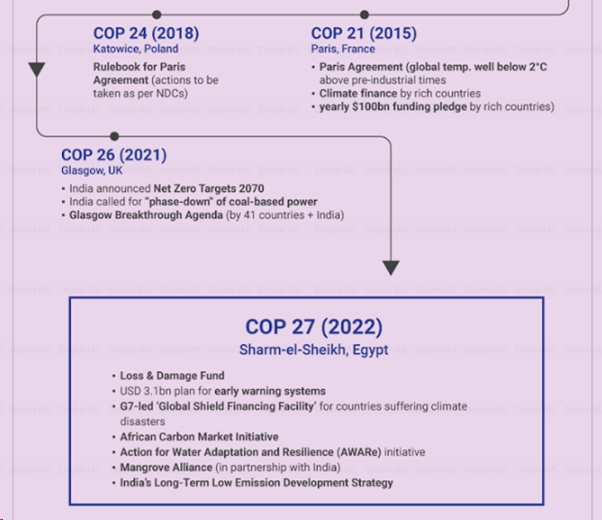
- The conference yielded a mix of positive outcomes and disappointments.
- It is marking a substantial step forward since the Paris Agreement.
- While some hail it as the conclusion of the fossil fuel era.
- There are apprehensions about deficiencies in adaptation efforts and troubling gaps in mitigation strategies.
Initiatives of India
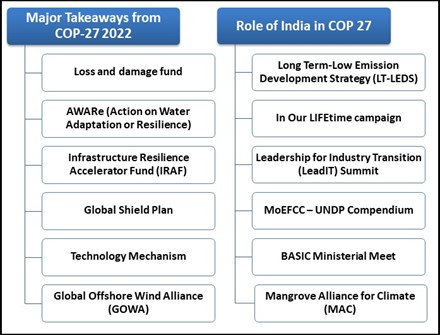
- Prime Minister Narendra Modi, in his COP-28 address, refrains from new commitments to contain global temperature rise.
- PM Modi addressed various issues and put forward certain proposals in COP 28 Summit.
- India argued that it needs to continue using coal to meet its developmental needs and emphasizes the importance of adhering to nationally determined contributions (NDCs).
- Nearly 200 countries agreed to "transition away from fossil fuels in energy systems" at the COP28.
- PM criticized the exploitation of nature by a few, impacting the entire world, especially the Global South.
- He reiterated India’s commitments from COP-26.
- It is including cutting emissions intensity and achieving net zero by 2070.
- He welcomed COP-28’s approval of the Loss and Damage Fund with over $500 million in financial commitments.
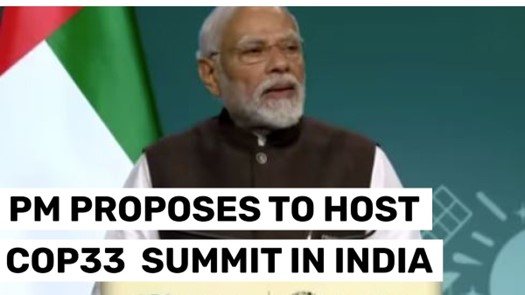
- He appreciated the UAE’s $30 billion Climate Investment Fund, calls for finalizing a new target on climate finance (NCQG).
- He emphasized the developed countries’ commitments to the GCF and the Adaptation Fund, urging carbon footprint elimination by 2050.
- The global Green Credit scheme generates credits for plantations on waste lands to rejuvenate natural ecosystems.
- India offered to host the 33rd edition of COP in India in 2028, urging developed countries to vacate carbon space before 2050.
- The proposal to host COP requires approval from UNFCCC signatories and, if accepted, would be India’s second hosting after 2002.
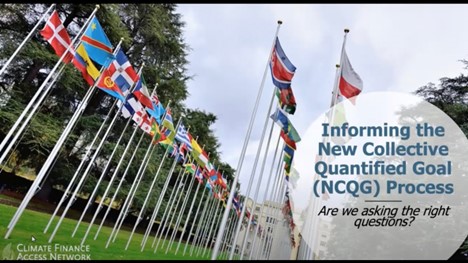
The Major Engagements of India in COP 28
Phase II of the Leadership Group for Industry Transition (LeadIT 2.0)
- It will focus on inclusive & industry transition, co-development and transfer of low-carbon technology, and financial support to emerging economies for industry transition.
Quad Climate Working Group (QCWG) on Localized Climate Action
- The event is focused on recognizing and amplifying the role of local communities, and regional governments in supporting sustainable lifestyles.
The Key Concerns
No Specific Timelines for Fossil Fuel Phase-out
- The agreement lacked a clear and urgent plan for fossil fuel phase-out.
- It was using vague language such as "transitioning away" without specific timelines or targets.
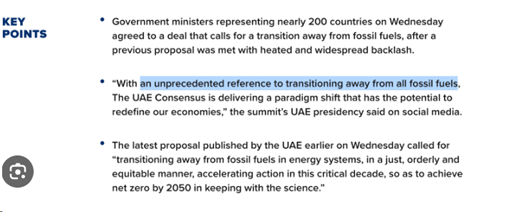
No Specified Targets on Tripling of Global Renewable Energy
- The COP28 agreement calls upon countries to contribute to tripling of global installed capacity of renewable energy and doubling of annual improvements in energy efficiency.
- Tripling is a global target, and it is not incumbent on every country to individually triple its current installed capacity.
- It is thus not clear how this tripling would be ensured.
No Clear Mechanisms for Achieving Adaptation Goals
- Developing countries made it clear that the adaptation draft fell well below their expectations.
- There is no mention of how these objectives are to be realized or the mechanisms that will fund these efforts.
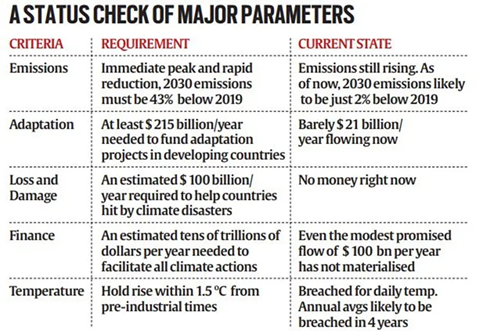
Lack of Accountability on Financial Commitments
- There is currently no established mechanism to hold governments and institutions accountable for fulfilling their climate financing commitments.
Varying Interpretations on Climate Finance
- Data on climate finance flows are compiled using various methodologies and have varying interpretations.
- Double counting of climate finance can occur when the same funds are reported by multiple parties, leading to an overestimation of the actual financial flows.
Resistance over Phase-down of Coal
- There was a move to stipulate that no new coal-fired power plants could be opened without an in-built carbon capture and storage facility.
- But this was strongly resisted by India, China, South Africa, and other countries.
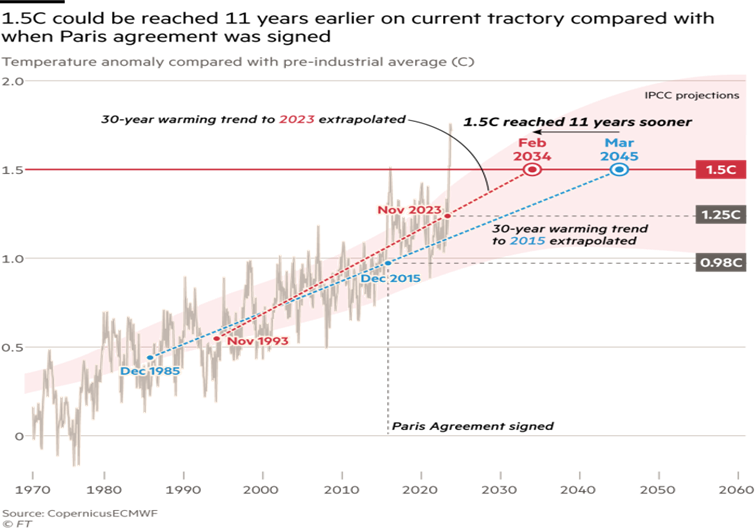
Concerns over Methane Emission Cuts
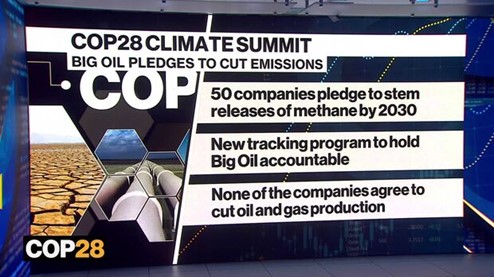
- The agreement talks about accelerating and substantially reducing non-carbon-dioxide emissions globally.
- It is including 30 percent of cutting methane emissions by 2030.
- Cutting methane emissions could involve tweaking agricultural patterns.
- It could be extremely sensitive in a country like India.
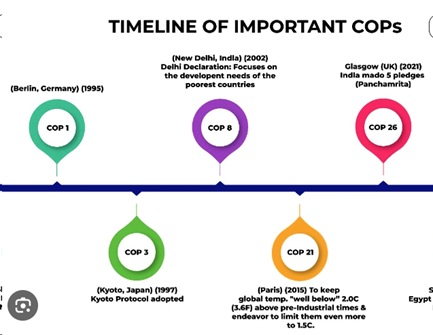
The Shortcomings of COP 28
1. Lack of Ambitious Climate Action
- Despite the various pledges, no binding ambitious climate action was launched.
2. Issues with the Fossil Fuel Pledge
- No time schedules and targets have been fixed for the phase out of fossil fuel.
3. Issues with the Renewable Energy Pledge
- Under the pledge, tripling of global renewable energy has been made a global target.
- However, there is no clarity as to how this would be achieved as no binding individual targets were made.
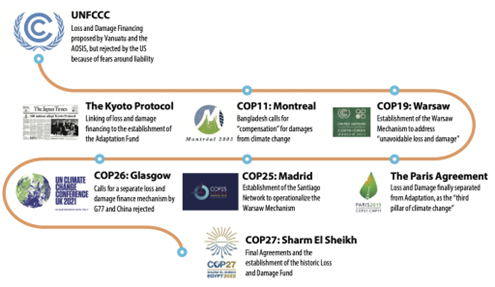
4. Issue with Phase Down of Coal Usage
- COP 28 failed to resolve the impasse over the proposal that no new coal-fired power plants could be opened without an in-built carbon capture and storage facility.
5. Impasse over Methane Emission Cuts
- Several countries, including India, are extremely opposed to any binding commitment to cut methane emissions.
6. Lack of Financing Mechanism
- COP 28 has failed to set up a financial mechanism to finance the Global Goal on Adaptation.
- The Draft of COP 28, did not express any concern over the failure of commitment on developed nations to provide $100 bn climate finance per year by 2020.
- The loss and Damage funding has been made voluntary.
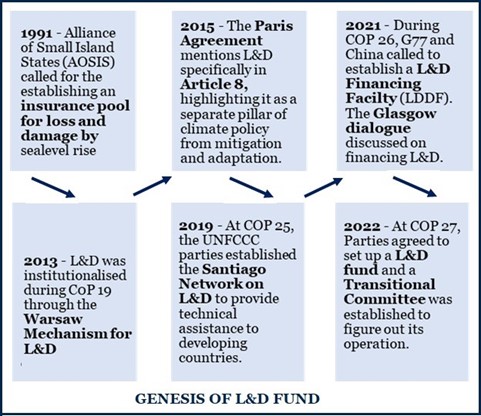
7. Misuse of the loose definitions in the COP 28 Draft
- The inclusion of the terms like “low-carbon fuels”, “low-emission” technologies, “low-carbon hydrogen”, and “transitional fuels”, can be misused by the EU and USA.
- Because they use these terms to describe natural gas.
- Natural gas is a major fossil fuel and contributes to global warming and climate change.
8. No mention of CBDR
- The term Collective but Differentiated Responsibilities (CBDR) and Polluter’s pay principle have been missing from the draft of the COP 28.
Key Points
- These are emphasized by the COP28 president-designate Sultan Ahmed Al Jaber.
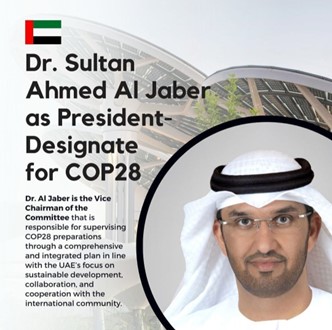
Inclusive Energy Transition and Climate Justice
- He emphasized the critical role of the developing world in the fight against climate change.
- He advocated for an inclusive energy transition and climate justice, ensuring that developing nations are not left behind.
- Efforts are needed to develop and deploy new technologies for effective climate action and energy transition globally.
Maximizing Technology Adoption and Climate Finance
- Developing countries should not be left behind in technology adoption.
- Because they represent a significant portion of the world’s population.
- Public, multilateral, and private sectors need to enhance climate finance to make it more available, accessible, and affordable.
- Technology is essential in helping vulnerable communities build capacities and transition to a low-carbon economic development model.
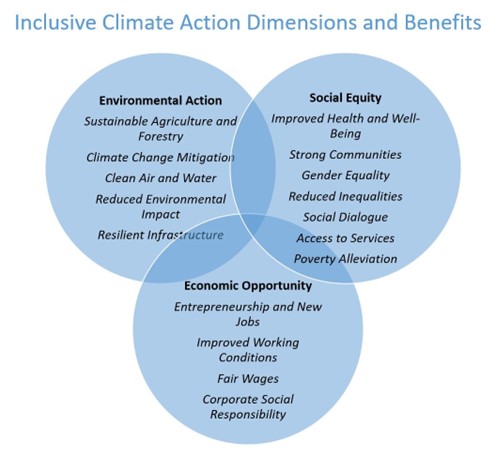
Renewable Energy Capacity and Hydrocarbons
- He advocated for a rapid increase in global renewable energy capacity.
- It is aiming to triple the capacity to 11,000 GW by 2030 and double it again by 2040.
- He acknowledged that hydrocarbons are still necessary as a bridge to a new energy system.
- Carbon footprint reduction, investment in low-carbon intensive barrels of oil, and intensity reduction are crucial for hydrocarbon usage.
Carbon Capture Technologies and Industrial Emissions
- He emphasized the need to “get serious” about carbon capture technologies to achieve realistic net-zero emissions scenarios.
- Policy incentives should encourage technology companies to commercialize various carbon capture methods.
- Expanding carbon capture technologies and turning captured carbon into practical products can contribute to emission reduction.
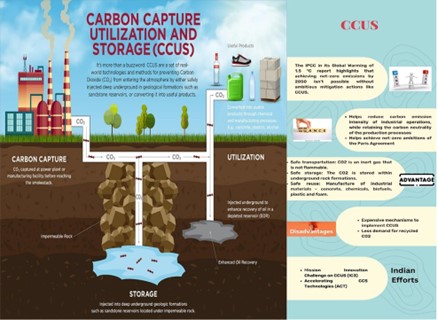
Breakthroughs in Battery Storage, Nuclear Energy, and Fusion
- He continued to emphasize the advancements in battery storage technology are crucial for integrating renewable energy sources.
- He supported the expansion of nuclear energy and investment in new energy pathways like fusion.
- Focus on agricultural technology is necessary as food systems and agriculture contribute significantly to global greenhouse gas emissions.
Way Forward
Commit to Climate Finance Targets
- All bilateral donors must live up to their climate finance commitments and set more ambitious targets.
- The need for integrating climate finance into national development plans and policies is even greater than before.
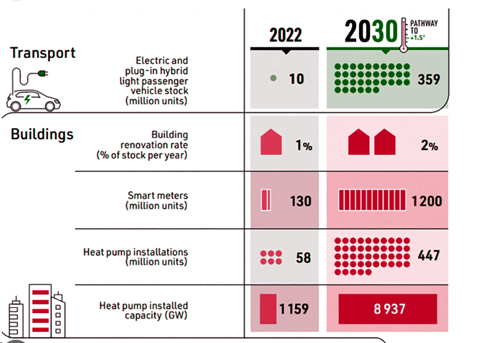
Clear Roadmaps and Timelines
- Develop clear and detailed roadmaps with specific timelines for achieving key milestones and targets.
- Establish interim goals that contribute to the overall long-term objectives, fostering a sense of accountability.
Enhanced National Action Plans (NDCs)
- The Countries should revise and strengthen their Nationally Determined Contributions (NDCs) to reflect more ambitious and concrete climate action targets.
- NDCs should cover a wide range of sectors, including energy, transportation, agriculture, and industry.
Legislation and Policy Support
- Enact and strengthen domestic legislation and policies that support the implementation of climate targets.
- Integrate climate considerations into existing laws and regulations across various sectors.
Capacity Building
- Invest in capacity building at local, national, and international levels to enhance the ability to implement climate actions effectively.
- Provide training and resources to support technological, financial, and institutional capacity.
International Cooperation
- Facilitate the transfer of climate-friendly technologies, especially from developed to developing countries.
- Share experiences, lessons learned, and best practices among countries to accelerate the adoption of environmentally friendly solutions across industries.
- Though the COP-28 has introduced new goals and pledges, substantial follow-up actions need to be undertaken to fulfil these goals.
Introduction of New Indicators
- New tangible indicators need to be identified to measure progress on each of the global goals established at COP 28.
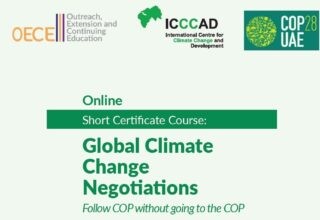
Establishment of Financial Mechanism
- Financial mechanism to raise $500 bn as estimated by the UNCTAD must be established at the earliest.
- Developed nations must not be given leeway to cut down on their financial obligation.
Binding commitments
- Efforts must be taken to make the renewable energy pledges binding on all the member countries.
- Clarity on phase down of Fossil Fuel - Clarity on the timeline and targets for fossil fuel phase down must be on the highest agenda of the future COPs.
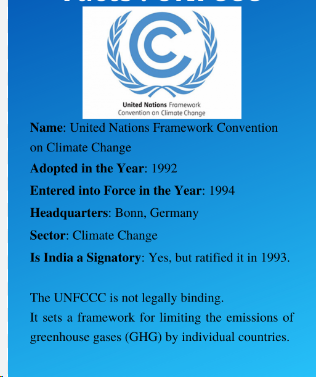
Climate Justice
- Common but Differentiated Responsibility (CBDR) must remain the guiding light in upcoming climate negotiations.
- COPs are crucial in the battle against climate change but the road ahead is both challenging and promising.
- Its success requires collective determination, unwavering commitment, and a recognition that the stakes are high.
- By embracing determined contributions and forging genuine partnerships, the global community can build a sustainable and resilient future.
Critical Decade
- The next decade is pivotal in determining the viability and scalability of CDR methods.
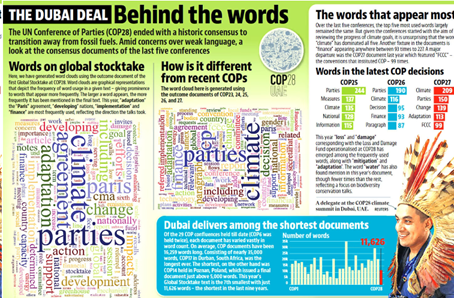
Balancing Act
- While CCS (Carbon capture and storage) and CDR (Carbon Dioxide Removal) offer potential solutions for emission reduction, their implementation must be carefully managed to avoid unintended consequences and ensure equitable and effective climate action.
Future of Climate Negotiations
-
The discussions and decisions at COP28 regarding CCS and CDR will significantly influence the trajectory of global climate action and the pursuit of the 1.5 degrees C target.
